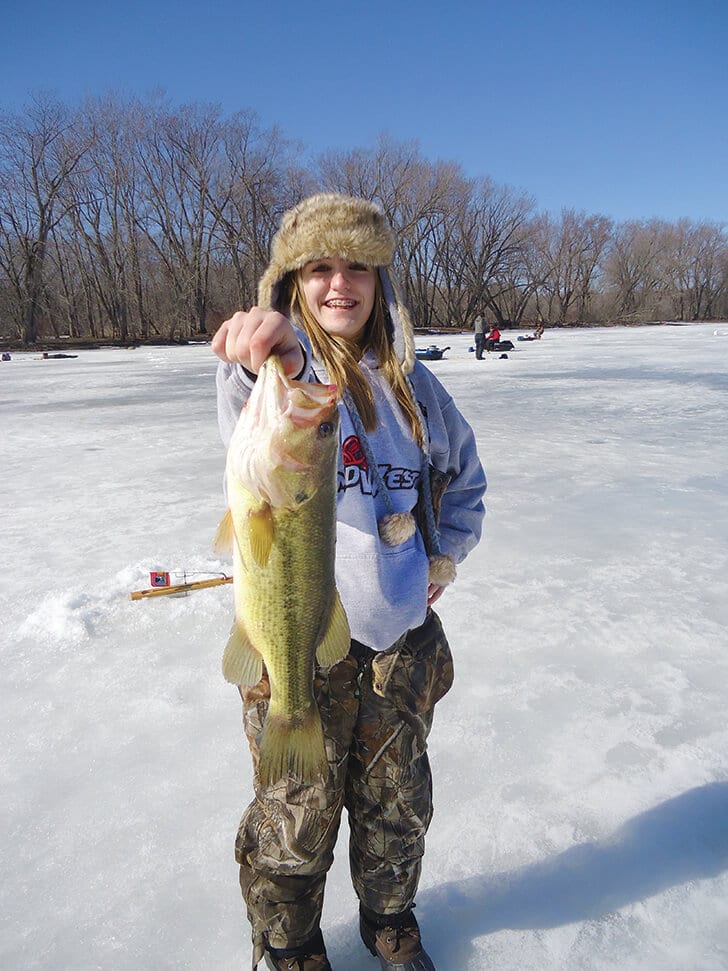When most people think of largemouth bass fishing, they think of warm days spent pitching soft plastics or jigs around docks and lily pads. And running spinnerbaits with oversized blades over submerged structure is always a favorite. It’s a lot more of a challenge to catch largemouths when the mercury drops below 32 degrees, especially up north, where the lakes turn to frozen slabs of ice.
This time of year in the parts of our country where the boats have been stored and dock fishing is no longer an option, it’s time to grab an auger and drill some holes. Remember to keep even the most basic fishing principals in mind.
Like any other fish, largemouth bass are creatures of habit and comfort. It’s not uncommon at all to find fish beneath the ice in the same areas you caught them in the fall. As predators, largemouth bass wait for opportunities of other, smaller fish lurking just outside the comfort zone. In many cases, fish will hold along weed edges, drop-offs and river channels. With that said, don’t overlook shallow, weedy bays and more importantly the middle of a river channel. Start by setting tip-ups along deep weed edges or breaks in bottom structure.
Good electronics make finding these areas much easier, but good topography lake maps are also very handy. Better yet, try one of the many topo lake map apps for your smartphone such as Fishidy, i-Boating or GPS Fishing Maps. Most provide detailed topographic overlays and many also provide GPS coordinates. The best part is that most are free, although you will find the preferred features are available only if purchased. Either way, these are very handy tools that will help put you in the right area.
If you decide to jig, a 24-inch ice rod with 3-pound fluorocarbon and a 1/16- to 1/8-oz. hammered nickel jigging spoon will certainly test your skills when a hungry bucketmouth hits. For the best results, tip the spoon with the head of a minnow, wax worm or several spikes. Bounce the jig off the bottom with an occasional swift lift, let it sit for a few seconds and repeat. I’ve caught them on the lift, on the drop and while it’s sitting. Just be ready for a hard hit. They don’t mess around.
When using tip-ups, I use Beaver Dam, Polar and Igloo with great results. The fish don’t seem to care. The terminal tackle is far more important but very basic. Tie on 2 feet of 10-pound mono as your leader and a #6 or #8 treble hook. Add a small split shot a foot up the line, and you’re ready to fish. If the area is rife with pike, forego the mono leader and tie your treble directly to your ice line. Dacron is still king when it comes to ice line. While other polyester braids have gained popularity, they are often relatively expensive. Dacron on the other hand is inexpensive and lasts forever. Medium shiners (i.e. 3 inches) hooked just behind the dorsal allows the baitfish to swim freely and erratically, perfect for hungry bass.
